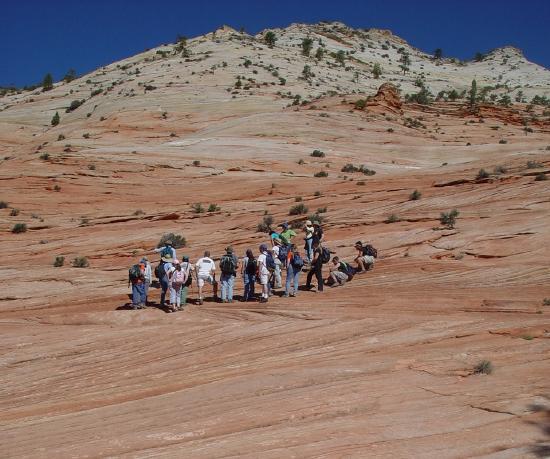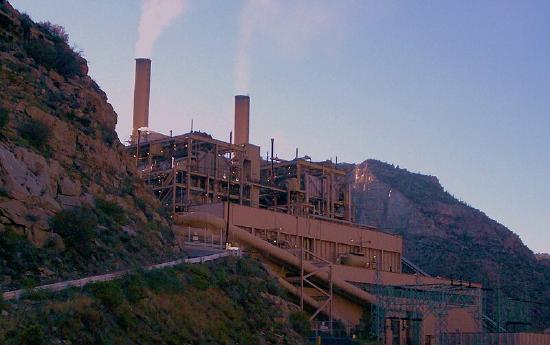1.4: The Study of Geology
- Page ID
- 32312
\( \newcommand{\vecs}[1]{\overset { \scriptstyle \rightharpoonup} {\mathbf{#1}} } \)
\( \newcommand{\vecd}[1]{\overset{-\!-\!\rightharpoonup}{\vphantom{a}\smash {#1}}} \)
\( \newcommand{\dsum}{\displaystyle\sum\limits} \)
\( \newcommand{\dint}{\displaystyle\int\limits} \)
\( \newcommand{\dlim}{\displaystyle\lim\limits} \)
\( \newcommand{\id}{\mathrm{id}}\) \( \newcommand{\Span}{\mathrm{span}}\)
( \newcommand{\kernel}{\mathrm{null}\,}\) \( \newcommand{\range}{\mathrm{range}\,}\)
\( \newcommand{\RealPart}{\mathrm{Re}}\) \( \newcommand{\ImaginaryPart}{\mathrm{Im}}\)
\( \newcommand{\Argument}{\mathrm{Arg}}\) \( \newcommand{\norm}[1]{\| #1 \|}\)
\( \newcommand{\inner}[2]{\langle #1, #2 \rangle}\)
\( \newcommand{\Span}{\mathrm{span}}\)
\( \newcommand{\id}{\mathrm{id}}\)
\( \newcommand{\Span}{\mathrm{span}}\)
\( \newcommand{\kernel}{\mathrm{null}\,}\)
\( \newcommand{\range}{\mathrm{range}\,}\)
\( \newcommand{\RealPart}{\mathrm{Re}}\)
\( \newcommand{\ImaginaryPart}{\mathrm{Im}}\)
\( \newcommand{\Argument}{\mathrm{Arg}}\)
\( \newcommand{\norm}[1]{\| #1 \|}\)
\( \newcommand{\inner}[2]{\langle #1, #2 \rangle}\)
\( \newcommand{\Span}{\mathrm{span}}\) \( \newcommand{\AA}{\unicode[.8,0]{x212B}}\)
\( \newcommand{\vectorA}[1]{\vec{#1}} % arrow\)
\( \newcommand{\vectorAt}[1]{\vec{\text{#1}}} % arrow\)
\( \newcommand{\vectorB}[1]{\overset { \scriptstyle \rightharpoonup} {\mathbf{#1}} } \)
\( \newcommand{\vectorC}[1]{\textbf{#1}} \)
\( \newcommand{\vectorD}[1]{\overrightarrow{#1}} \)
\( \newcommand{\vectorDt}[1]{\overrightarrow{\text{#1}}} \)
\( \newcommand{\vectE}[1]{\overset{-\!-\!\rightharpoonup}{\vphantom{a}\smash{\mathbf {#1}}}} \)
\( \newcommand{\vecs}[1]{\overset { \scriptstyle \rightharpoonup} {\mathbf{#1}} } \)
\( \newcommand{\vecd}[1]{\overset{-\!-\!\rightharpoonup}{\vphantom{a}\smash {#1}}} \)
\(\newcommand{\avec}{\mathbf a}\) \(\newcommand{\bvec}{\mathbf b}\) \(\newcommand{\cvec}{\mathbf c}\) \(\newcommand{\dvec}{\mathbf d}\) \(\newcommand{\dtil}{\widetilde{\mathbf d}}\) \(\newcommand{\evec}{\mathbf e}\) \(\newcommand{\fvec}{\mathbf f}\) \(\newcommand{\nvec}{\mathbf n}\) \(\newcommand{\pvec}{\mathbf p}\) \(\newcommand{\qvec}{\mathbf q}\) \(\newcommand{\svec}{\mathbf s}\) \(\newcommand{\tvec}{\mathbf t}\) \(\newcommand{\uvec}{\mathbf u}\) \(\newcommand{\vvec}{\mathbf v}\) \(\newcommand{\wvec}{\mathbf w}\) \(\newcommand{\xvec}{\mathbf x}\) \(\newcommand{\yvec}{\mathbf y}\) \(\newcommand{\zvec}{\mathbf z}\) \(\newcommand{\rvec}{\mathbf r}\) \(\newcommand{\mvec}{\mathbf m}\) \(\newcommand{\zerovec}{\mathbf 0}\) \(\newcommand{\onevec}{\mathbf 1}\) \(\newcommand{\real}{\mathbb R}\) \(\newcommand{\twovec}[2]{\left[\begin{array}{r}#1 \\ #2 \end{array}\right]}\) \(\newcommand{\ctwovec}[2]{\left[\begin{array}{c}#1 \\ #2 \end{array}\right]}\) \(\newcommand{\threevec}[3]{\left[\begin{array}{r}#1 \\ #2 \\ #3 \end{array}\right]}\) \(\newcommand{\cthreevec}[3]{\left[\begin{array}{c}#1 \\ #2 \\ #3 \end{array}\right]}\) \(\newcommand{\fourvec}[4]{\left[\begin{array}{r}#1 \\ #2 \\ #3 \\ #4 \end{array}\right]}\) \(\newcommand{\cfourvec}[4]{\left[\begin{array}{c}#1 \\ #2 \\ #3 \\ #4 \end{array}\right]}\) \(\newcommand{\fivevec}[5]{\left[\begin{array}{r}#1 \\ #2 \\ #3 \\ #4 \\ #5 \\ \end{array}\right]}\) \(\newcommand{\cfivevec}[5]{\left[\begin{array}{c}#1 \\ #2 \\ #3 \\ #4 \\ #5 \\ \end{array}\right]}\) \(\newcommand{\mattwo}[4]{\left[\begin{array}{rr}#1 \amp #2 \\ #3 \amp #4 \\ \end{array}\right]}\) \(\newcommand{\laspan}[1]{\text{Span}\{#1\}}\) \(\newcommand{\bcal}{\cal B}\) \(\newcommand{\ccal}{\cal C}\) \(\newcommand{\scal}{\cal S}\) \(\newcommand{\wcal}{\cal W}\) \(\newcommand{\ecal}{\cal E}\) \(\newcommand{\coords}[2]{\left\{#1\right\}_{#2}}\) \(\newcommand{\gray}[1]{\color{gray}{#1}}\) \(\newcommand{\lgray}[1]{\color{lightgray}{#1}}\) \(\newcommand{\rank}{\operatorname{rank}}\) \(\newcommand{\row}{\text{Row}}\) \(\newcommand{\col}{\text{Col}}\) \(\renewcommand{\row}{\text{Row}}\) \(\newcommand{\nul}{\text{Nul}}\) \(\newcommand{\var}{\text{Var}}\) \(\newcommand{\corr}{\text{corr}}\) \(\newcommand{\len}[1]{\left|#1\right|}\) \(\newcommand{\bbar}{\overline{\bvec}}\) \(\newcommand{\bhat}{\widehat{\bvec}}\) \(\newcommand{\bperp}{\bvec^\perp}\) \(\newcommand{\xhat}{\widehat{\xvec}}\) \(\newcommand{\vhat}{\widehat{\vvec}}\) \(\newcommand{\uhat}{\widehat{\uvec}}\) \(\newcommand{\what}{\widehat{\wvec}}\) \(\newcommand{\Sighat}{\widehat{\Sigma}}\) \(\newcommand{\lt}{<}\) \(\newcommand{\gt}{>}\) \(\newcommand{\amp}{&}\) \(\definecolor{fillinmathshade}{gray}{0.9}\)Geologists apply the scientific method to learn about Earth’s materials and processes. Geology plays an important role in society; its principles are essential to locating, extracting, and managing natural resources; evaluating environmental impacts of using or extracting these resources; as well as understanding and mitigating the effects of natural hazards.

Geology often applies information from physics and chemistry to the natural world, like understanding the physical forces in a landslide or the chemical interaction between water and rocks. The term comes from the Greek word geo, meaning Earth, and logos, meaning to think or reckon with.
Why Study Geology?
Geology plays a key role in how we use natural resources—any naturally occurring material that can be extracted from the Earth for economic gain. Our developed modern society, like all societies before it, is dependent on geologic resources. Geologists are involved in extracting fossil fuels, such as coal and petroleum; metals such as copper, aluminum, and iron; and water resources in streams and underground reservoirs inside soil and rocks. They can help conserve our planet’s finite supply of nonrenewable resources, like petroleum, which are fixed in quantity and depleted by consumption. Geologists can also help manage renewable resources that can be replaced or regenerated, such as solar or wind energy, and timber.

Resource extraction and usage impact our environment, which can negatively affect human health. For example, burning fossil fuels releases chemicals into the air that are unhealthy for humans, especially children. Mining activities can release toxic heavy metals, such as lead and mercury, into the soil and waterways. Our choices will have an effect on Earth’s environment for the foreseeable future. Understanding the remaining quantity, extractability, and renewability of geologic resources will help us better sustainably manage those resources.

Geologists also study natural hazards created by geologic processes. Natural hazards are phenomena that are potentially dangerous to human life or property. No place on Earth is completely free of natural hazards, so one of the best ways people can protect themselves is by understanding the geology. Geology can teach people about the natural hazards in an area and how to prepare for them. Geologic hazards include landslides, earthquakes, tsunamis, floods, volcanic eruptions, and sea-level rise.

Finally, geology is where other scientific disciplines intersect in the concept known as Earth System Science. In science, a system is a group of interactive objects and processes. Earth System Science views the entire planet as a combination of systems that interact with each other via complex relationships. This geology textbook provides an introduction to science in general and will often reference other scientific disciplines.
Earth System Science includes five basic systems (or spheres), the geosphere (the solid body of the Earth), the atmosphere (the gas envelope surrounding the Earth), the hydrosphere (water in all its forms at and near the surface of the Earth), the cryosphere (frozen water part of Earth), and the biosphere (life on Earth in all its forms and interactions, including humankind).
Rather than viewing geology as an isolated system, Earth system scientists study how geologic processes shape not only the world but all the spheres it contains. They study how these multidisciplinary spheres relate, interact, and change in response to natural cycles and human-driven forces. They use elements from physics, chemistry, biology, meteorology, environmental science, zoology, hydrology, and many other sciences.
The Geologist’s Tools
.jpg?revision=1&size=bestfit&width=350&height=473)
In its simplest form, a geologist’s tool may be a rock hammer used for sampling a fresh surface of a rock. A basic toolset for fieldwork might also include:
- Magnifying lens for looking at mineralogical details
- Compass for measuring the orientation of geologic features
- Map for documenting the local distribution of rocks and minerals
- Magnet for identifying magnetic minerals like magnetite
- Dilute solution of hydrochloric acid to identify carbonate-containing minerals like calcite or limestone.
In the laboratory, geologists use optical microscopes to closely examine rocks and soil for mineral composition and grain size. Laser and mass spectrometers precisely measure the chemical composition and geological age of minerals. Seismographs record and locate earthquake activity, or when used in conjunction with ground-penetrating radar, locate objects buried beneath the surface of the earth. Scientists apply computer simulations to turn their collected data into testable, theoretical models. Hydrogeologists drill wells to sample and analyze underground water quality and availability. Geochemists use scanning electron microscopes to analyze minerals at the atomic level, via x-rays. Other geologists use gas chromatography to analyze liquids and gases trapped in glacial ice or rocks.
Technology provides new tools for scientific observation, which leads to new evidence that helps scientists revise and even refute old ideas. Because the ultimate technology will never be discovered, the ultimate observation will never be made. And this is the beauty of science—it is ever-advancing and always discovering something new.
References
- Zion class. Authored by: Mason Chuang.
- Hoover Dam, Colorado River. Authored by: Ubergirl. Located at: https://commons.wikimedia.org/wiki/File%3AHoover_Dam%2C_Colorado_River.JPG. License: CC BY-SA 3.0.
- Castle Gate Power Plant. Authored by: David Jolley. Located at: https://commons.wikimedia.org/wiki/File%3ACastle_Gate_Power_Plant%2C_Utah_2007.jpg. License: CC BY-SA 3.0.
- Liquefaction at Niigata. Authored by: Ungtss. Located at: https://commons.wikimedia.org/wiki/File%3ALiquefaction_at_Niigata.JPG. License: public domain.
- Crater Lake. Authored by: Zainubrazvi. Located at: https://commons.wikimedia.org/wiki/File:Crater_lake_oregon.jpg. License: CC BY-SA 3.0.
- Archaeopteryx lithographica (Berlin specimen). Authored by: H. Raab. Located at: https://commons.wikimedia.org/wiki/File%3AArchaeopteryx_lithographica_(Berlin_specimen).jpg . License: CC BY-SA 3.0.


